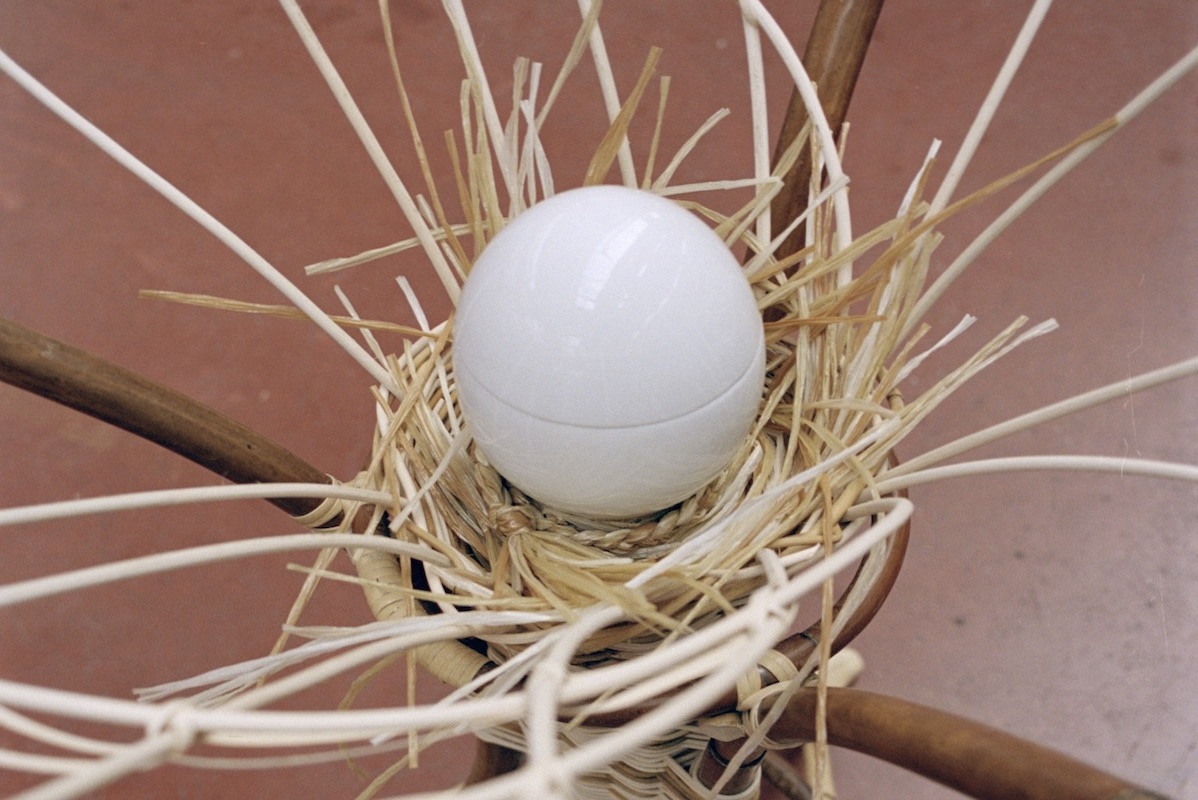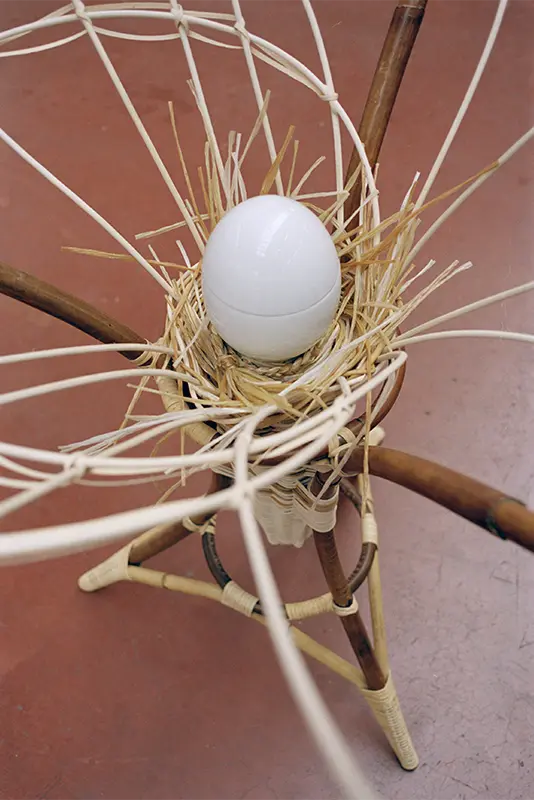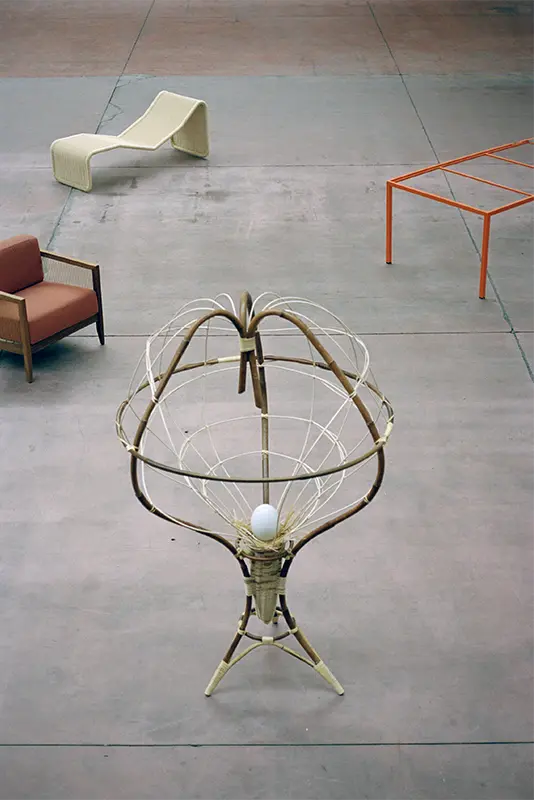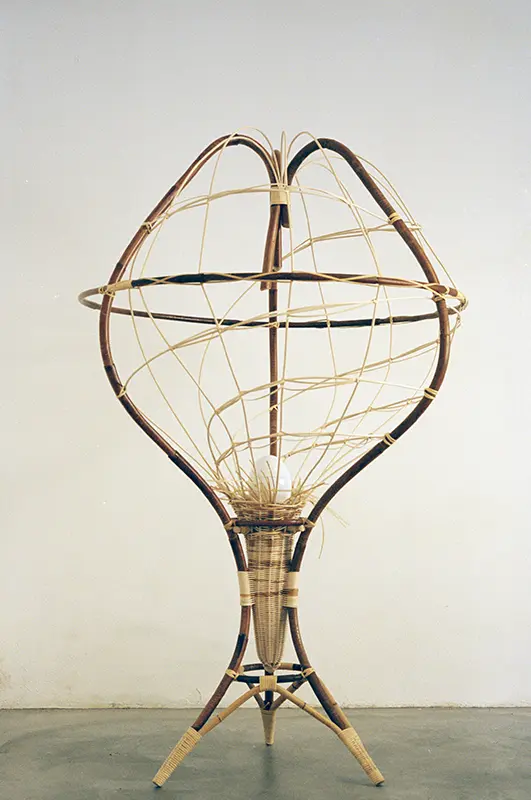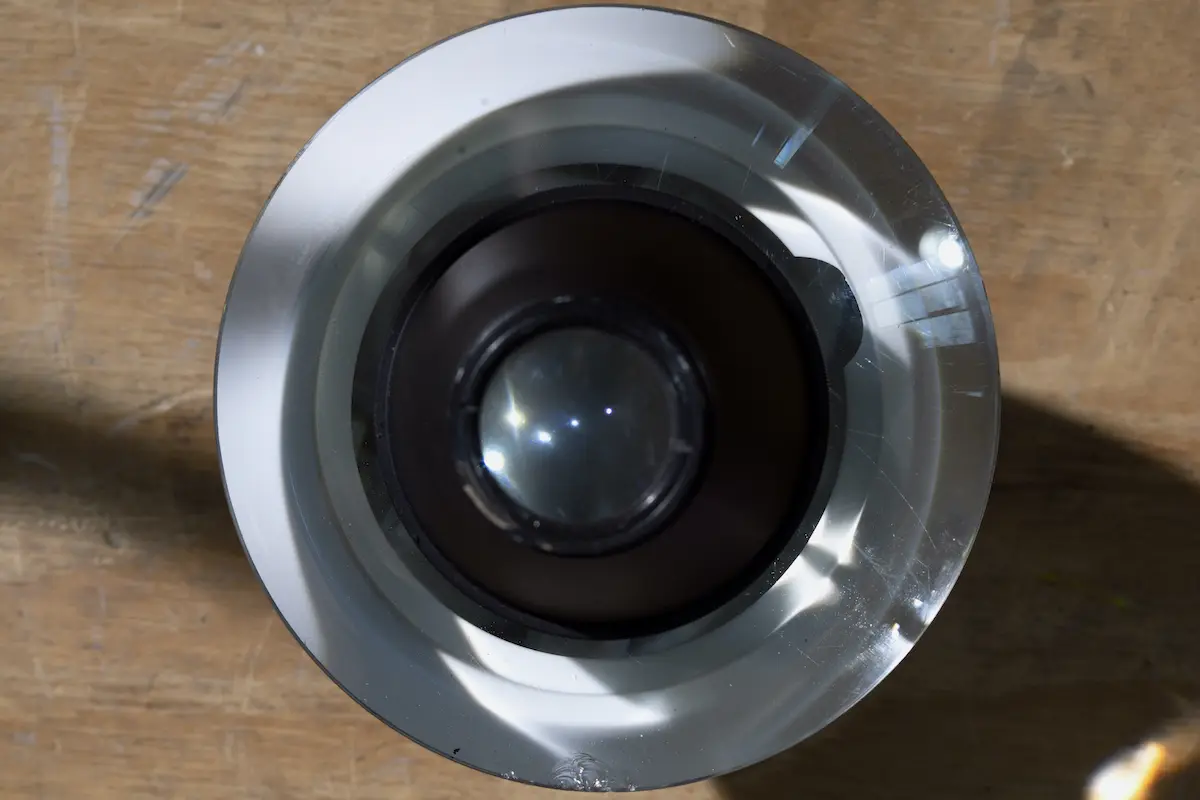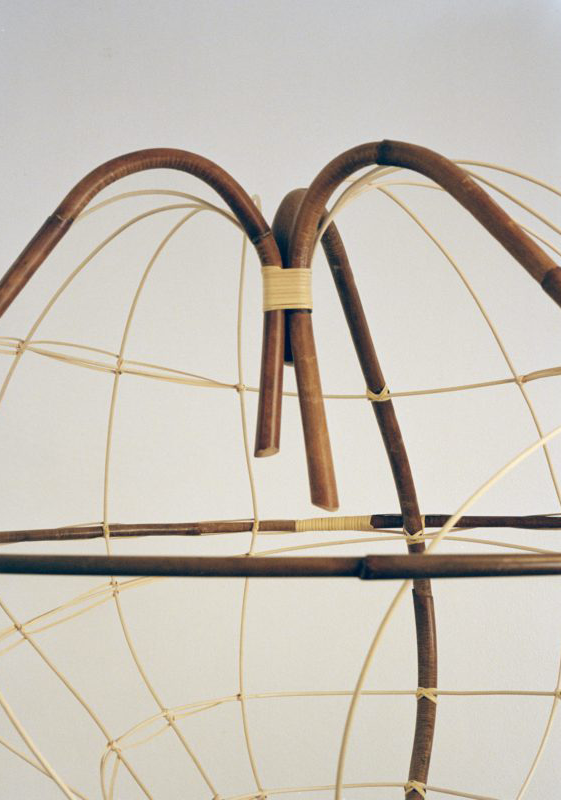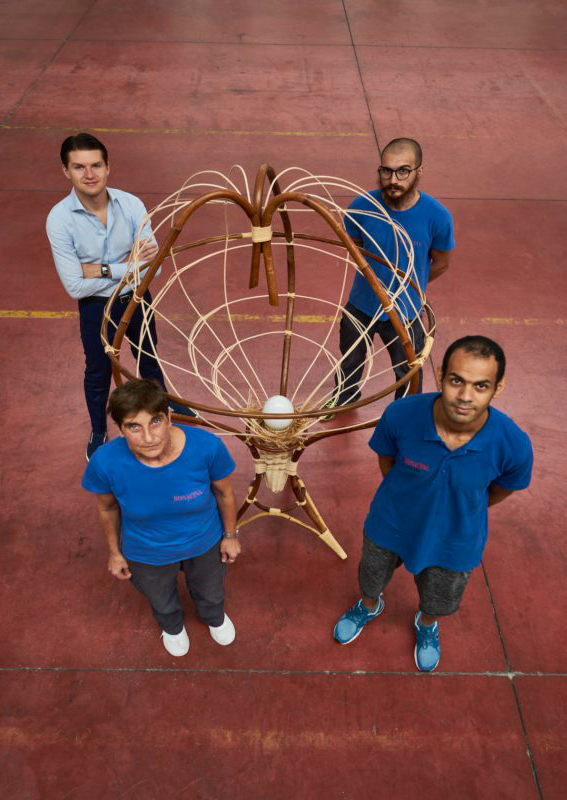The recurrence of a process marks the sign of rebirth as art imitates life in his rendition of the egg. Six artists share their own visions of Ovum
Ovum – Alexander James: repetition turns daily rituals into that of meaning
Recent processes in Alexander James’ work consist of repetition. «I found in some of the smaller notepads that it would be filled with the same subject with over twenty different versions». Each time you draw the same subject — be it a portrait of an object — something new will always be added. He found this a useful way to decide which character to include in his painting. «A collection of large-scale canvases triggering daily rituals». If I paint it over ten times and still find something interesting in it, then I will employ it in a painting of mine, he says. This figure seen on the ceramic urn is from his recently completed painting, A Flourishing Affair.
The egg, a symbol of new life and unhatched potential reveals the circle of life. The beginning of all creation: the shell as the heavens, the yolk as the Earth. The reproduction of the egg in every species is a depiction of the same pattern being repeated but with variations in its results, similarly, James links his analogy of the Ovum to the repetition of his art that shows an identical result each time he attempts to paint the same object over and over again using the urn for an egg.

Ovum – Elia Bonacina: a family business
As heir to the Bonacina family business, Elia Bonacina weaves a concept that takes shelter in the warmth of rattan and rattan core. A nest holds the porcelain egg provided by Ginori1735. The artistic form of creation used to conjure this shell made from cane is one that runs through his veins as the fourth generation of the Bonacina family. His vision for the ‘Ovum’ (egg) series lies in a rendition of his family business that speaks to his very core. With craftsmanship at the base of his values and foundation, the series takes a turn towards history with century’s old handicraft techniques that have been passed on from generation to generation. A legacy for the ages is that which continues to live on through the transfer of knowledge, from one to another. Using natural materials to convey his message, the support of natural talent brings life to the egg that is sheltered from its fragility.
In the human dimension of the company, shared artistic vision and individual talent form a creative community. Lorenzo – Rattan and wood sculptor; Khalid – the violinist; Rosa – the weaving master. The concept of the nest is rediscovered by Elia Bonacina belonging to the fourth generation of the family, who entrusts the creation of the work to Lorenzo. The egg is protected by a Rattan core armor. The creation of the void, based on Khalid’s idea, is carried out with a work of subtraction. The clash between order and disorder is tamed in weft and warp by the hands of Rosa. In the base supporting the nest lies is a representation of the number 3, which allows the resolution of the dualistic conflict according to the principles of numerology.
Ovum – Paolo Bottarelli: Scrutinising the resemblance of an egg to a lens
Hermeticism pictures a tight intertwinement between the microcosmos, or the dimension of Man, and the macrocosmos, the World. The egg originates from the cosmos. A recurring element for many artists — from Piero della Francesca to Lucio Fontana. The egg incarnates a perfection which surpasses any geometrical shape — it is superior to the circle, because unlike the circle, the oval shape appears spontaneously in nature. In this work the broken lid of the vase is inserted in the prepackaged egg created by Richard Ginori.
Ginori’s vase is now therefore devoid of its functionality – it becomes an urn that contains its own shards. I destroyed the perfection inherent to the concept of infinite, relegating perfection to the world of ideas. The vase becomes a funerary urn containing part of its own body, thus dissolving the concepts of inside and outside, evolving from design object/fetish to alchemical icon. The parabola that runs along the shape’s margins has no start and no end. The lid of the egg, now a container of itself, has been replaced by a lens — like an eye, it scrutinizes the shattered ruins of itself, these «sharp bottle shards» as Montale wrote, that remind us of the inevitable cycle of birth and death to which even the perfection of this shape is subject.

Ovum – Giovanni Vetere: Homo Aquaticus
«I create habitats. Imaginary habitats where I make every element. The viewer is a guest, and they experience this new world. In my habitat my body is the protagonist and for a moment they are in it» says Vetere of his work. The recurring image shown is of Vetere submerged in water, eyes shut and breathing through a tube. Surrounding this center, architectural structures are built, or an underwater world is made through human sized, plant-like ceramics and foliage. The performances play off the fetal, and sit in the state between life and death; birth and drowning.
Often engaging with the theatrical, Vetere has crafted a narrative behind the concept of his sunken body; the homo aquaticus. It was first developed for the 2018 BA Graduate Show at London’s Camberwell College of Arts, inspired by the predictions of a twentieth century oceanographer, Jacques-Yves Cousteau; ‘that the human race will one day move underwater and live in the sea’. In Vetere’s story an Italian scientist drops his son at a desert island and two years later returns to find his child now lives in water – he created a homo aquaticus. «It’s about me in the end. I am the homo aquaticus. I have the desire of being someone else, of being something else. And the scientist is my father, who is an important figure for me. He taught me how to be in the sea, he brought me his own passion for it».
In a new work for Lampoon, Vetere has continued the story, and reinterpreted a porcelain Ginori egg engulfed by the tentacles of ceramic seaweed. Named Homo Aquaticus Egg, the project includes an underwater film. Vetere explains how he started experimenting with water, the physical challenges of giving his performances, and the process of making the most recent ceramic.

Ovum – Johnson Tsang: A reminder that we are all part of mother nature
Johnston Tsang transforms the porcelain egg, a statue of significance, into an egg-shaped bed of mud, roots and rock for the bonsai that emerges through the soil of life. To Tsang, love is at the root of emotions, including those perceived to be negative, such as fear. In the ongoing ‘Ovum’ (egg) series, a new interpretation takes shape through the hands of the sculptor himself. Connected to the serenity in struggle, we are alleviated through the transformation of the egg-shaped porcelain urn that has now been replaced by soil in the shape of an egg with life emerging through it. This is a depiction of the realm within which nature acts as a metaphor for birth as a reminder that we are all a part of it.
«It seems that we are having a long winter in 2020. Let’s learn from trees, rocks, or our Mother Nature. There is nothing that can not be healed in nature. We just need to remember we are all part of Mother Nature. There is nothing that is actually harming our soul. So take this chance to rest, relax, forgive, and love. Then naturally, we will all be healed».
Sculpting is the language in which Johnston Tsang communicates his observations of the world. Born in Hong Kong in 1960, Tsang pays attention to his craftsmanship, ensuring that a piece captures the vision he held prior to its creation. Drawing since the age of 4, the desire to sculpt his vision arose from his practice of drawing as he always saw the world in 3D. With an imagination that captivates the very child in you, thought provoking workmanship is produced through mediums such as ceramic and porcelain, occasionally incorporating stainless steel and other materials into his pieces. His works pose questions rather than provide answers.
The common denominator in his labour is the theme of love. He concentrates on the relationships among things, between humans and the things around them. Having worked in the Royal Police Force for 13 years, Tsang observed fatal cases that left an imprint on him, claiming his time spent at the police force has helped attribute to his work and creations.

Ovum – Ibrahim Kamara: artistic interpretation found in a porcelain series of eggs
Opening the Uova series, in collaboration with Ginori 1735, a company taken under the wing of Kering Group, that expresses excellence in the artistic manufacture of porcelain, is stylist and photographer Ibrahim Kamara. The series titled ‘Ovum’ (egg) expresses the beginning of all creation by using the egg as an analogy. An unhatched egg resting in a nest is a message of anticipation, unexpected potential and hope. Once broken or cracked, the egg transcends into a state of vulnerability: its contents either spilled or fragilely holding on for dear life as the emerging mass catches its first breath.
From then on, it’s a matter of survival, hoping that its sheltered growth has nurtured it enough to pull through within the pre-existing conditions and despite that, break free. Understanding its possibility for interpretation, six creatives – all different in their craft and ethos – apply their own meaning to the fluid messages of the Egg.
The still life, an art form which found its popularity during the seventeenth century, can seem a little old-fashioned for a young stylist like Ibrahim Kamara, although German photographer Wolfgang Tillmans has been creating contemporary work around the style.
Still life photography has a scientific aspect in that it documents and records details that cannot be seen with the naked eye. Hidden forms and natural patterns are examined, and their beauty and complexity revealed. Ibrahim went to medical school before turning his sight onto the world of fashion.
Maybe there is a connection there? The egg, a symbol of life in many cultures, acts as a cornucopia or horn of plenty symbolizing abundance. Ibrahim Kamara’s approach to styling is rooted in his African childhood.
I see his work as revolutionary because as a stylist his work focuses on abundance instead of status. He does not always need designer goods to create images symbolizing opulence. His work invites us to move away from the mindset that fashion is about the consumption of designer goods, but in fact is an act of adorning oneself. An act which is present in all cultures.
«For the image I let the flowers sit in my living room for a couple of days. They became fragile and there is beauty in that. Sometimes you have to get to your weakest and lowest point to come back and make beautiful work. Not being scared to fail or get it wrong is what keeps life interesting. You can always learn, I’m still learning and hungry to learn to be better at my craft»

Alexander James
James works across the avenues of painting, sculpture, video and installation. He graduated from the Camberwell College of Art, London, in 2015 with a BA degree in illustration. Completing an art foundation course at Leeds College of Art in 2012, James has exhibited widely in solo and group exhibitions in London, Paris, Berlin and New York, and has curated numerous shows.
Elia Bonacina
Designing the Eris lamp in 2012, Elia Bonacina took an active part in the family business. Maintaining the stance for longevity towards the outcome of his work, Bonacina continues to work with Non-profit Organization Management company FederlegnoArredo, which is the heart of the Italian wood and furniture chains since 1945, defending their know-how and sustaining the development of their companies. CEO of Bonacina 1889, believes there is no future without roots.
Paolo Bottarelli
Born in Italy, in 1975, Paolo Bottarelli lives and works in Berlin. Since 2009 Paolo Bottarelli has been investigating the relation between original works and their doubles. His aim is to create a pictorial image that can be translated in a mirrored copy. He attempts to reproduce an original icon involving the challenge of recreating an aura which, by definition, is essential to the original, and hence unreproducible.
Giovanni Vetere
Young Rome-based artist who graduated from Camberwell College of Arts’ Fine Art program in 2018. Though he began his journey with photography and sculpture, he now focuses on live art as a means of pursuing his interest in experimenting with challenging mediums.
Johnson Tsang
Tsang has won awards for his work, including the grand prize in the 2012 Taiwan Ceramics Biennale, a prize in the Korea Gyeonggi International Ceramic Biennale 2011 international competition, and a workmanship award in the Tea Ware by Hong Kong Potters Competition in 2007, among others. He also received The Secretary for Home Affairs’ Commendation from the Government of Hong Kong Special Administrative Region in 2009 for his outstanding achievements in international art events.
Ibrahim Kamara
Moving to London in his early teens, Kamara is originally from Sierra Leone. He has since worked with fashion Maison’s such as Stella McCartney, Fenty and Hermès as well as publications including British Vogue, Love and AnOther. An alumnus from Central Saint Martins, Ib Kamara is paving his way within the fashion industry with his signature style whilst paying homage to stylists of the past. Kamara’s most recent collaborations include Rihanna’s new Fenty Fashion label and 2020’s edition of the Pirelli calendar by Paolo Roversi.


